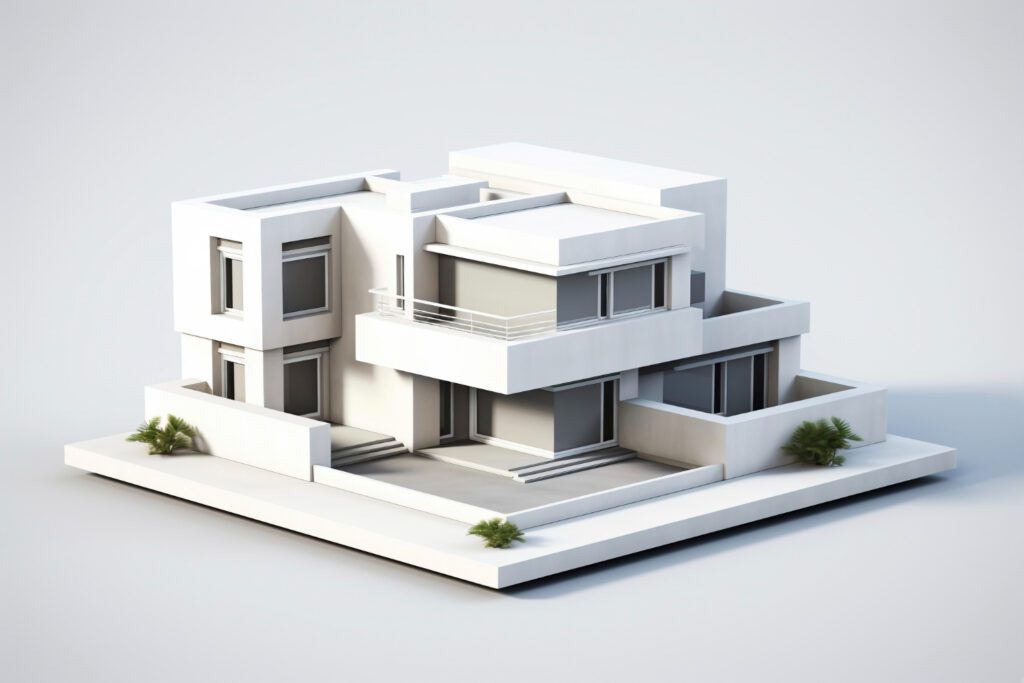
Choose the LOD The right Level of Development (LOD) can make the difference between a useful BIM model or wasted cost and effort. In this practical guide you will see what the LOD is, how to decide it according to objective, discipline and resources, and a clear checklist to document it in your BIM model. BIM Execution Plan (BEP).
Contenido
- 1 What exactly is LOD and why does it matter?
- 2 Quick summary: what does LOD 100-500 represent?
- 3 5 questions to help you decide on the right LOD
- 4 Practical recommendations by use case (quick map)
- 5 LOD vs LOIN / ISO 19650 – how it fits into your processes
- 6 Practical checklist for your BIM Execution Plan (BEP)
- 7 Common mistakes and how to avoid them
- 8 How to measure that you have made the right choice (quick KPIs)
- 9 Closing and next step
- 10 OUR CONTACT
What exactly is LOD and why does it matter?
The LOD defines how much geometric and information detail a model element has at each phase of the project: from a conceptual representation to a verified as-built model with metadata for maintenance. These standardized definitions facilitate communication between teams and avoid misunderstandings about what is expected from the model.
Practical difference between “detail” and “information”.
Do not confuse level of graphic detail with level of development/information The LOD: an object can be seen graphically detailed but lacks the operational parameters necessary for FM. The LOD encompasses both aspects (geometry + reliability of information).
Quick summary: what does LOD 100-500 represent?
- LOD 100concept / masses. Useful in feasibility phases.
- LOD 200: approximate elements / placeholders (overall dimensions and position).
- LOD 300: precise geometry and coordination with other disciplines (commonly used in design).
- LOD 350: details of interface and connections between systems (advanced clash detection).
- LOD 400Manufacturing / assembly information (fabrication-ready).
- LOD 500as-built model verified and data-driven for asset management.
5 questions to help you decide on the right LOD
Answer these questions internally before signing the scope:
- What is the objective of the model? (design, coordination, prefabrication, FM).
- Who will use the model next? (architects, contractors, manufacturers, facility managers).
- What part of the building is critical? (dense PEM areas, laboratories, clean rooms).
- What is the budget and timeframe for modeling/validation? (high LOD = more cost/time).
- What is your scan quality (resolution and registration)? The quality of the point cloud obtained by 3D laser scanning limits the achievable LOD: if the cloud is not accurate, aiming for LOD400/500 will risk redoing the job. Align scan resolution with target LOD from planning.
Practical recommendations by use case (quick map)
- Architectural design / light remodeling → LOD 300.
- Coordination and detection of interference between disciplines. → LOD 350 in critical areas.
- Fabrication / prefabrication of ductwork or carpentry. → LOD 400 for elements to be produced.
- Facility Management / digital twin operational → LOD 500 (field-verified with metadata).
Tip: mix LOD by discipline and by zone. Don’t model everything at the same level: define general LOD 300 and increase to 350-400 only where it adds value (technical areas, complex facades, critical equipment). Having a specialized BIM modeling service ensures that each element is developed at the right level, optimizing costs and deadlines.
LOD vs LOIN / ISO 19650 – how it fits into your processes
ISO 19650 and modern frameworks introduce the concept of LOIN (Level of Information Need)more than a number, it is to ask you what information each stakeholder needs and when. Documenting both the graphical LOD and LOIN (attributes, tolerances, deliverables) in the BEP avoids contractual misunderstandings. Integrate this decision into the project’s information exchange clause.
Practical checklist for your BIM Execution Plan (BEP)
Includes minimum:
- LOD by discipline (e.g., Architecture 300, Structure 350, MEP 400).
- Elementary examples by LOD (what represents a “fan” in LOD300 vs LOD500).
- Metadata requirements (manufacturer, model, serial number, warranties).
- Geometric tolerances and expected accuracy (mm).
- Formats and deliverables (IFC, RVT, point clouds).
- Validation and acceptance procedure (on-site review, sign-off).
- Responsible parties and delivery dates.
A clear BEP reduces scope creep and avoids unnecessary modeling.
Common mistakes and how to avoid them
- Over-modelingModel everything in LOD 400/500 by default → unnecessary cost. Avoid with an LOD matrix by priority.
- Under-specificationRequest “LOD 300” without defining metadata → useless model for FM. Specify examples and attributes.
- Do not align scan and LODPlan cloud resolution prior to modeling.
- Do not involve downstream usersIntegrates FM/production from the initial phase to avoid redoing work.
How to measure that you have made the right choice (quick KPIs)
- Modeling time vs. estimate (deviation < 15%).
- % of rejected elements in work validation.
- Reduction of geometry-related RFIs.
- Metadata compliance (percentage of items with complete record).
Closing and next step
Choosing the LOD is not just technique; it is strategy: it defines what for what, who y with what precision you need the model, document it in the BEP and align the scan quality with the final target. Integrating LOD + LOIN from the beginning avoids rework, reduces costs and transforms the model into a real tool for design, construction and operation.
Contact us today and find out how we can help you.
OUR CONTACT
Find out what we can do for you.
If you have any questions, need more information or just want to know how we can help you, please fill out the form form below and we will contact you within 48 hours.
